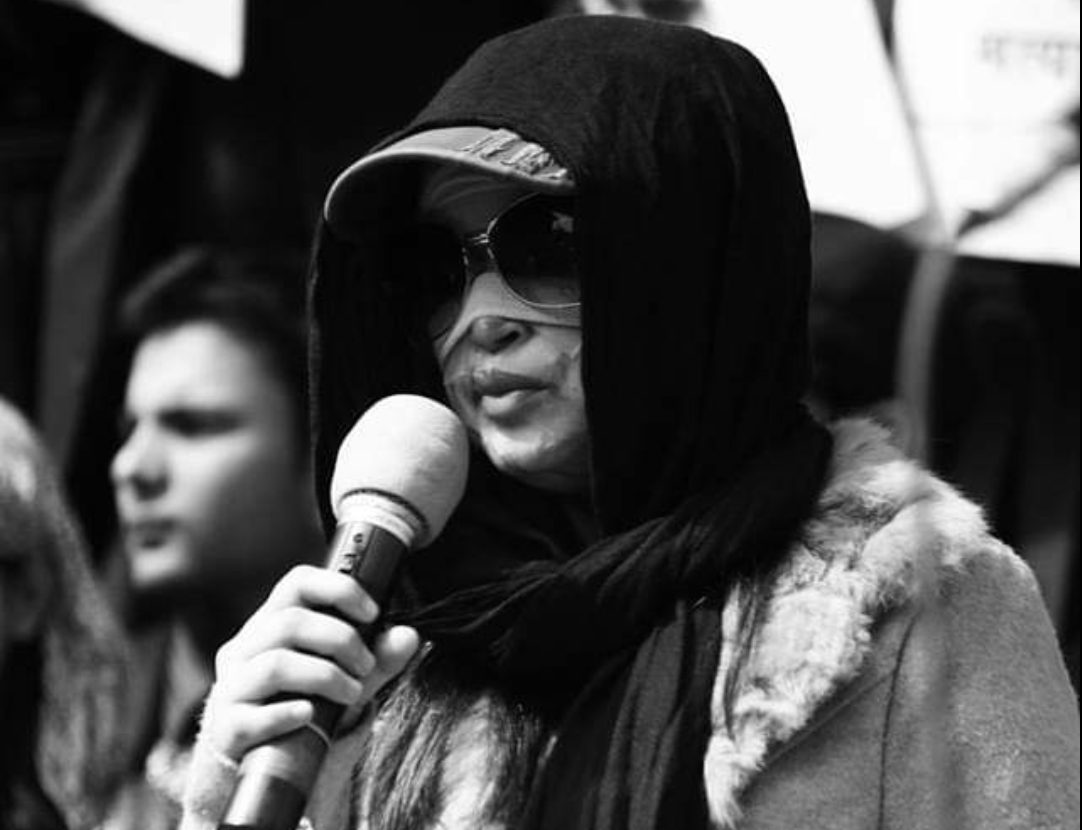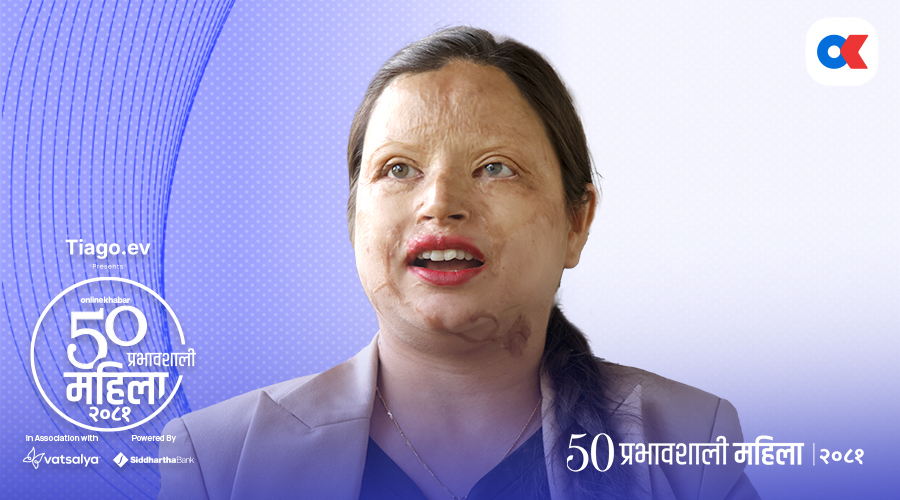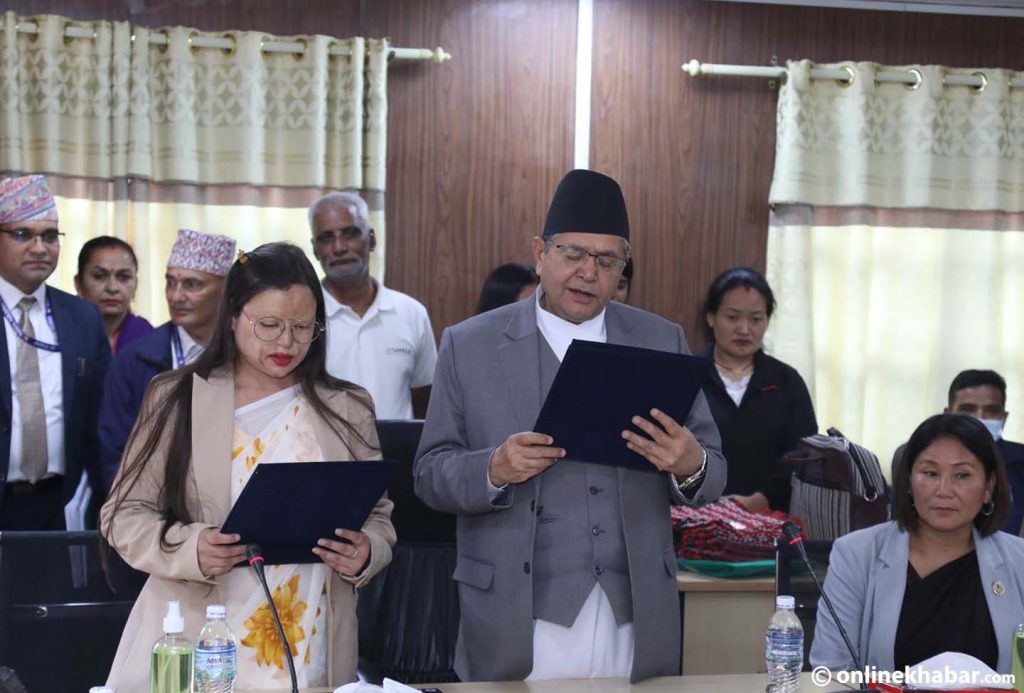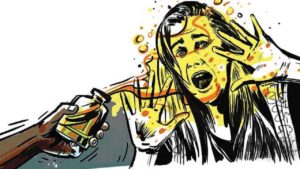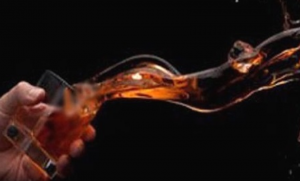Binbabasini Kansakar, a resident of Hetaunda in the Makawanpur district, was leading a normal life like any other school girl until her 12th grade. But, her life changed after she survived an acid attack by one, later identified as Dilip Raj Keshari from India, in 2013.
“He used to say he liked me, a 19-year-old girl, and had even proposed the marriage,” Kansakar remembers, “I refused his proposal, yet he used to follow me everywhere I went.” He would make frequent calls and messages, wait for her on the way to her school, tuition, and way back home.
“People only saw me walking with him, talking with him, but were far from knowing reality. They didn’t know the circumstances. It was a lot of mental torture. Therefore, I resorted to talking with my father about the issue.”
She shared the story, and the father also supported her. However, she faced the consequence in the form of the acid attack, which has emerged as a major form of violence against women in Nepal of late. Eight years down the line, today, Bindabasini Kansakar thinks the society’s perception of acid attack survivors aggravates their wounds as the government efforts to address such concerns are nominal.
A case in point
After Kansakar had already complained about the issue with her father, the man came to the Kansakars’ grocery store located on the ground floor of their house in Hetaunda. As far as Kansakar knows, the father that day calmly told him not to follow his daughter.
But, a few days later, on April 22, 2013, he came again. Kansakar had just returned from her school and was at her store. “However, he didn’t come to our store directly but waited at the adjacent one, which belonged to my aunt,” Kansakar says, “That’s why I didn’t care about him.”

Then, one customer came to the shop asking for her mom and hence she went upstairs to call her. But, when she returned with the mom’s message, the man was already at her shop.
“I lost my temper and asked him why he was there. He remained silent for a few seconds,” Kansakar narrates, remembering he had a jar of something in his hand; that looked like honey to her.
“Suddenly, he opened the lid and threw it on me and ran away,” Kansakar says, “I had no idea what he threw on me, but first I thought it was water.”
She says, following the incident, she ran upstairs screaming in pain.
“I couldn’t open my eyes but was searching for the washbasin to wash my face,” Bindabasini Kansakar narrates, “But, unfortunately, the washbasin did not have water that day. I sat there in disappointment.”
Later, her father suspected Kansakar survived an acid attack; he was familiar with the substance because he used to apply that in cleaning toilets.
He then poured water all over her body, but by then all of her clothes were already burnt, as per Kansakar.
She was immediately taken to the Hetaunda Community Hospital, which referred her to the Tilganga Eye Hospital, Kathmandu.
“Eyes were given the first priority. But, by the time we reached Kathmandu, my face had already become like a football. I was unable to open my eyes and utter a single word,” recalls Kansakar.
Her family had lodged a police complaint against the attacker on the same day, but he had fled from there after the attack. It took police almost six years to arrest him from Simara. He is now in the Bhimphedi jail of Makawanpur as he was handed down an eight-year sentence in 2019.
Meanwhile, her family has so far spent Rs 15 million in her treatment, without receiving any support from the government. Kansakar knows her treatment is yet to be over but does not know how much it will cost.
The magnitude of acid attack
Before facing one on her own, Bindabasini Kansakar did not have any idea about the impact of the acid attack.
However, once she came out of hospital after four months and faced society, she says she fell apart. “I then learnt what it was, how it can destroy people’s face, body, organs and the entire life.”
“People talked about me in front of myself and on my back,” she says, “For a while, as an optimist, I tried to look at the positive side of it to make myself stronger, but couldn’t do so.”

“After some time, their negative talk got into my mind, even when I had done no wrong, the whole society was pointing its finger at me. I then realised the society always blames girls and women for any crime that they have to bear,” she says.
At such times, however, her family became her biggest support. “My father didn’t allow me to get out of my house for a year not because there were talks about me, but for health reasons (to protect the burns from dust and sun),” she says.
Kansakar says she was, however, fed up sitting at home and doing nothing. So, she decided to step outside.
But, her face had so many marks of the burn that she did not want to show it to the public. For about three years, she kept on covering the face.
“Many people would get scared, seeing my bandaged face, especially during evenings. They used to stare at me,” she remembers, “Many would comment that I was so beautiful earlier, but that used to hurt me a lot. I used to think that society had not accepted me yet,” says Kansakar.
But, her family was always beside her, Kansakar claims, as it helped her resume her education after years of the scars. After completing school, she joined a bachelor’s-level programme.
“Initially, when I joined the college, I used to feel a bit awkward as many used to hesitate to take to me,” Kansakar says, “But, gradually, everything became normal as the awareness regarding the acid attack was rising with the surge in cases.”
“I was called from many NGOs in Kathmandu to attend different events, and at such events, I met so many other acid attack survivors. That changed me from within as they were behaving normally.”
Search for support

Last year, when the Nepal government introduced a law incorporating the provision of a fine of Rs 10 million and a jail sentence of up to 20 years for the culprits of acid attacks, she felt nice about the state after so many years.
“However, the magnitude of the violence we had to bear can’t be justified by severe punishment. They should be at least sentenced to jail for life,” she says, “But still, nothing is better than something.”
She also observes that there has not been much work for raising awareness on the acid attack. Such issues are only raised, or sensationalised, by the media when somebody is attacked, Kansakar feels.
Kansakar, who aims to be a businesswoman, is now working at Kumari Bank for the last year. She says, “My major focus as of now is my work and my treatment. And, I am trying to get help from the government for my treatment.”



